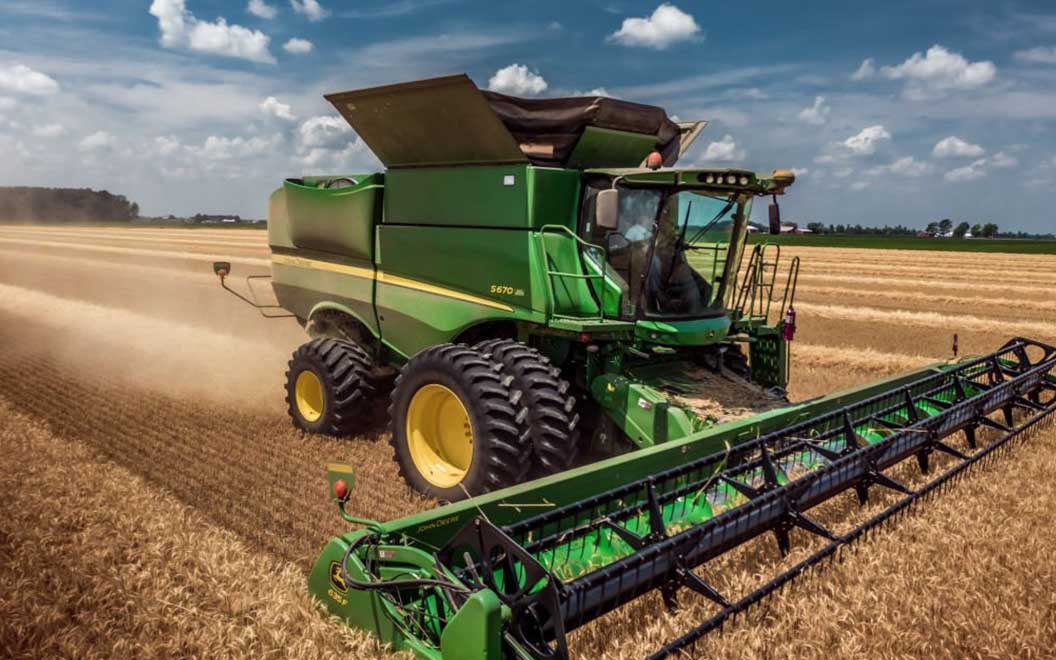A forage harvester, also known as a silage harvester, forager, or chopper, is an agricultural tool that uses precision-cut or flail-type cutting mechanisms to gather fodder plants to create silage. The devices can also be self-propelled or pull-type. The most appropriate kind is determined by the nature and size of the farm enterprise.
Pull-type harvesters are typically utilized on smaller farms because to cheaper investment requirements and the need for less capacity. The greatest self-propelled harvesters have the same capacity as the largest pull-type equipment. Self-propelled harvesters are commonly used by dehydrators, custom operators, and bigger dairy farmers since they have a higher tonnage capacity and can harvest a larger number of hectares at a lower cost.
Forage can be cut and fed on a daily basis, or it can be frozen, dried, ensiled, or pelleted and given later. When fodder is field dried, ensiled, or pelleted, the VI typically varies dramatically compared to fresh hay, hence these conservation procedures aren’t employed in research where the results are to be applied to grazed pasture.
VI is influenced by the cutting procedure and the sward’s past history. When cutting with a flail forage harvester, the VI of forage from clean swards was reduced by 2 to 7%, but when the forage had been previously grazed, the presence of very tiny amounts of faeces reduced VI by 25 and 43 per cent for chopped and lacerated forage, respectively.
Cutting, lifting, and carrying huge quantities of fresh fodder from the field with a little chopping, bruising, and laceration has been produced. Fresh fodder is normally provided twice a day, with refused forage weighed and discarded each morning before feeding.
On a spinning cutter head, the precision-cut machines feature variable numbers of blades. These knives spin against a fixed shear head, slicing the forage into different lengths based on the space between the knives’ ends and the fixed shear head. The length of the rope may be adjusted by the operator to suit the forage. Slinging knives attached to a spinning shaft cut or chop the forage in the flail-type cutter. The blades are positioned to miss the shear plate and cut the material to the appropriate length. This harvester is most typically used for direct-cutting forages, such as grasses or legumes, where the length of the cut is less important.
A variety of forage harvesters include a large diameter cylinder with several knives, which are designed to prevent major cylinder damage from foreign objects by enabling each knife to bend or be driven inward to produce a broad space between knife and shear-plate. The knife that has been damaged can readily be replaced. The machine’s feed and delivery mechanisms have been streamlined. A broad contra-rotating cylinder and a pair of feed rollers are used in one such arrangement. The crop is propelled by the machine, which ejects foreign particles like as tiny pebbles while using little energy. Because of reduced chopping, some innovative designs have achieved excellent throughput in relation to power input.
Flail forage harvesters shred fodder plants by pounding or cutting them with free-swinging chains, hammers, or knives. The flails or blades that are used to cut plants go in the same direction as the machine. The flail choppers don’t have chopping knives; thus, they can’t chop the material into silage-worthy lengths. The flails are only used to cut the plants, and the collected material may then be blown into windrows to cure. The hay is more or less conditioned by the flails’ thrashing.
The tractor may be equipped with a basic flail forage harvester. Flail forage harvesters with offset blades are popular because they prevent the complications that come with having one set of tractor wheels go through the crop before it is chopped. The rotor speed, the connection between rotor speed and forward speed, and the distance between the flail tips and an adjustable shear bar all influence the degree of chopping and laceration. The influence of rotor speed is far greater than that of forwarding speed. The length of a chop can be shortened by using two shear bars. From a window, the machine can cleanly pick up crops.
Specialist headers, generally with two circular blades to slice through the bottom of the stems and a feeder mechanism to bring the chopped shoots into the machine, are used with forage harvesters. The chips are blasted into a silage trailer before being hauled away from the field. Billets are made of sugar cane harvesters that have been turned into billets, which are 20 cm long and 9 mm thick stem pieces. Because billets are thicker than chips, they allow for natural airflow and can dry down to 30% MC in a heap outside. Chips may need to be kept on a drying floor with cool air flowing through them to eliminate moisture. If you leave them too damp, they might quickly heat up.


Comments are closed.